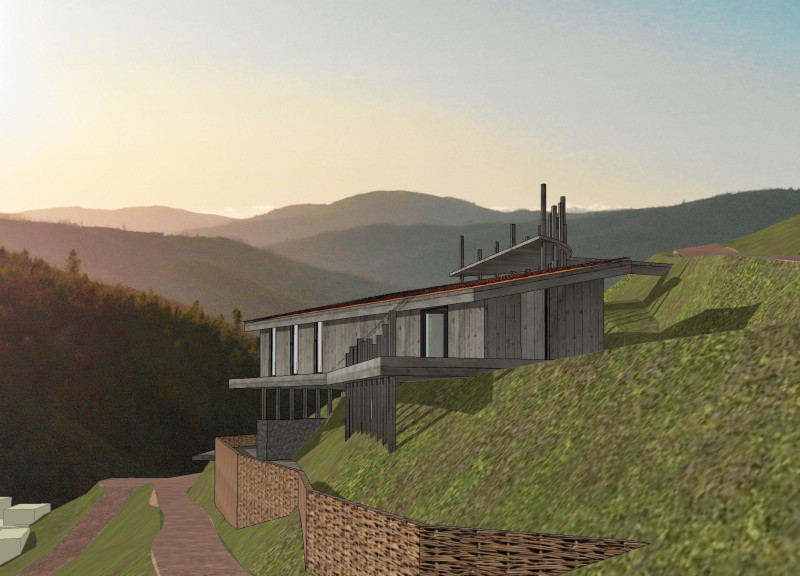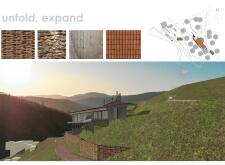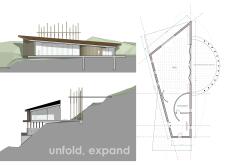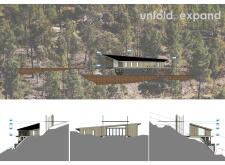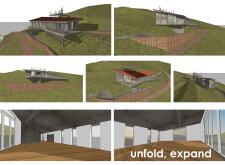5 key facts about this project
The architectural design follows the concept of "Unfold, Expand," which focuses on the relationship between different spaces and how they connect to one another. Positioned in an area suited for modern living, the design aims to support daily tasks while encouraging social interaction among residents. This approach emphasizes openness and accessibility, creating a comfortable environment that suits contemporary lifestyles.
Functionality and Spatial Arrangement
Key components of the design include a Toilet + Shower area measuring 15.8 m², a Kitchenette, and a larger Shala that spans 137.7 m². These spaces are arranged thoughtfully to facilitate interaction and ensure that every part is usable. The careful balance between private and communal areas allows for efficient living while catering to the varied needs of the inhabitants.
Integration of Outdoor Spaces
A noteworthy aspect is the Protected Outdoor Terrace, which bridges the boundary between inside and outside living. This terrace adds an extra layer to the living experience, providing a space for relaxation or gatherings without sacrificing privacy. It allows natural light and fresh air to flow while maintaining a sheltered environment.
Materiality and Texture
Woven material, stone, wood, and tile are the choices of material specified in the project. Each material plays an important role in shaping the character of the space. The textures not only add visual interest but also serve practical purposes, enhancing the overall durability of the design while unifying its aesthetic.
Visual Representation
The project documentation includes various views and sections of the design, offering a clear understanding of the architectural intent. These images showcase how the different spaces work together, reflecting careful planning and consideration of how people will move and interact within the environment.
The detailing in the design emphasizes how spaces connect, providing both function and a pleasing appearance. Each area is crafted to encourage exploration, interaction, and a sense of belonging within the living space.


